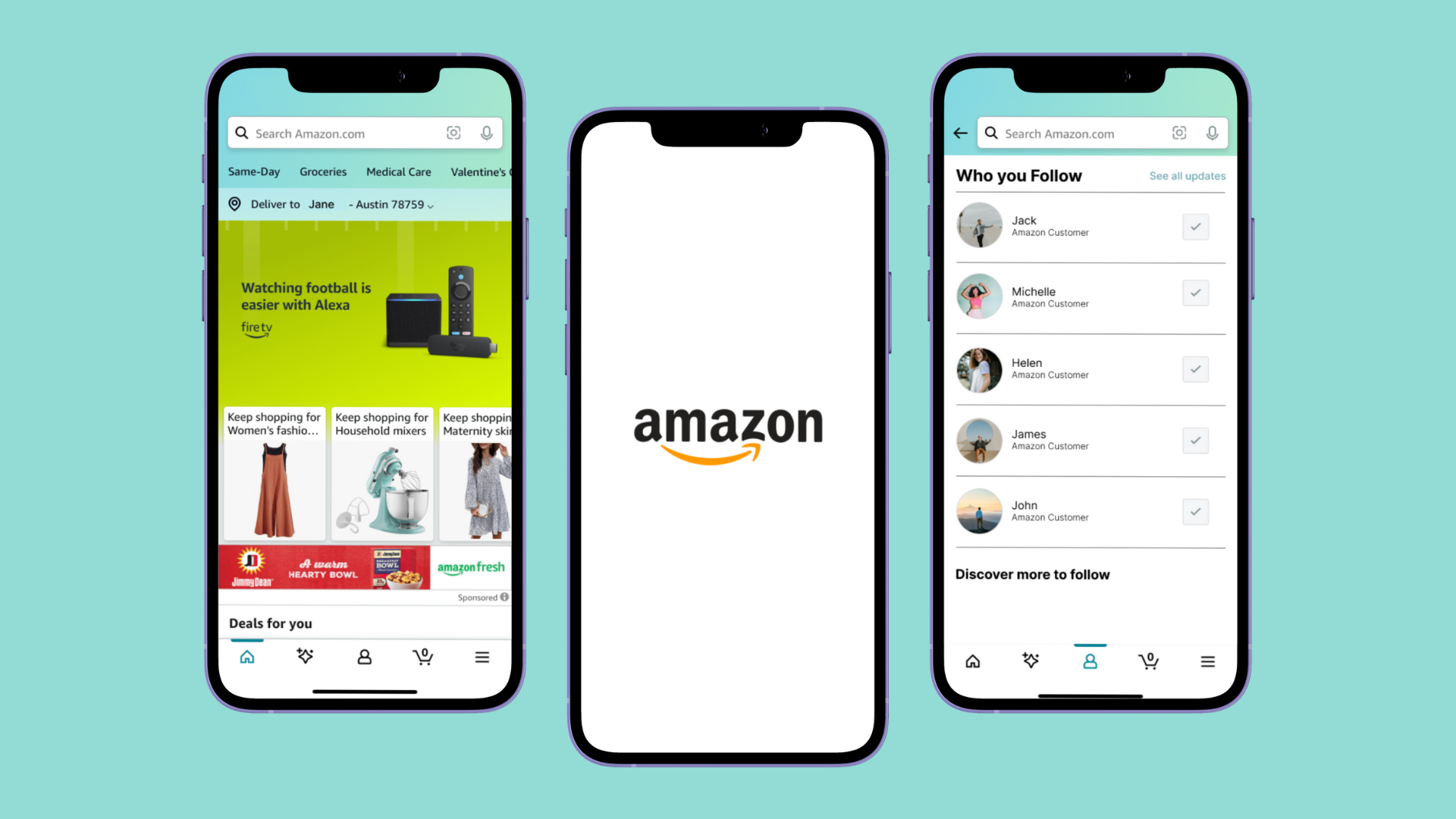Amazon Influencer Storefronts
Amazon, one of the largest e-commerce sites has moved into the space of having Amazon influencers with their own storefronts since 2017.

Role
UI/UX Designer
UX Research
Tools
Figma
Figjam
Methodology
Research
Persona
Wireframing
Prototypes
Usability Testing
Timeline
4+ weeks
Background
Goals
Finding Amazon influencer storefronts through the Amazon platform isn’t always easy to find. Many consumers would have to use other social media platforms to get to these storefronts. I’m interested in understanding user experiences and the challenges they encounter during this process.
I want to add a feature for users to find Amazon influencer storefronts they follow accessible through the Amazon platform, without the use of other social media platforms. In adding this feature, it would:
Improve user’s convenience and engagement with the influencer they follow
Enhance personal experience with Amazon
Empathize
I wanted to understand the motivations and why individuals follow Amazon influencers, and the process for them to get to the influencers Amazon storefronts. I interviewed five Amazon users and hoped to gain their perspectives and gain insights to what users do.
Interview Questions
Can you walk me through the process of getting to the Amazon influencer storefronts that you follow?
How many Amazon influencers do you follow?
In your experience, have you tried looking for Amazon storefronts through the Amazon platform?
Have you experienced any pain points or challenges doing this?
Summary
After interviewing these five avid Amazon users, I found out four out of the five expressed how they did not even know that there was a way to find Amazon influencer storefronts through Amazon platforms. All five of the users either bookmark the storefront, or refer to the influencer’s other social media platforms (Tiktok, Instagram, or Youtube). The one user who is aware of the Amazon page that have a list of the influencers that they follow, said that she only found it once but didn’t try it again because it took too long to get there.
Define
Affinity Map
After interviewing the five users, I was able to create an affinity map to see what like-minded ideas and thoughts they had to help with the design process.
Personas
I created two distinct types of individuals based on my research. One who bookmarks a lot of things he wants to buy, and another persona who has her favorite influencers she follows.
Ideate
User Flow
I wanted to create a very simple flow, without the many clicks and confusion to find the Amazon Influencer Storefronts, through the mobile app.
Prototype
Low-fidelity Wireframes
In the low-fidelity layouts, I explored options for organizing the content on key screens and kept it pretty simple.
High-fidelity Wireframes
Once I received feedback from three participants from the low-fidelity wireframes, I incorporated them as I created the high-fidelity wireframes. A big difference made was making changes to the button “Influencer Storefronts” to “Your Profile”. Another one was adding a user’s profile page before going to the the influencers that the user follows.
User Test
I conducted a usability test, to identify any issues that may come up getting to the user’s profile and eventually to the Amazon influencers that the user follows.
One of the feedbacks I received was to create standard style guides - such as buttons, fonts, and images that would be proper for mobile.
I also created what the “Influencer Storefront” page would look like.
Final Design
Following usability testing, I refined some elements for the final design so that it was easier to use and intuitive for the user.
Reflections
This project challenged me to adapt to what was already established with an existing app and its design system. In practicing to add a feature or function in a particular space, that still worked well I was thankful to collaborate with my mentor in figuring out the space.









